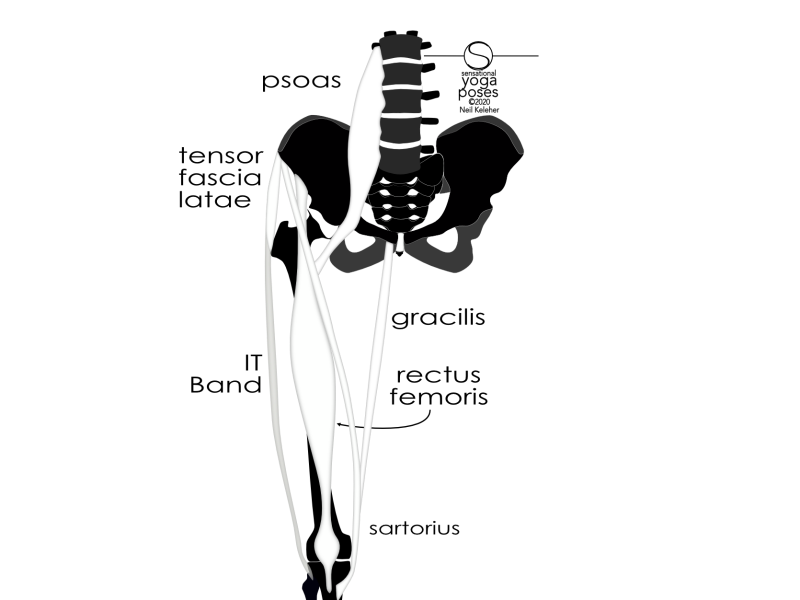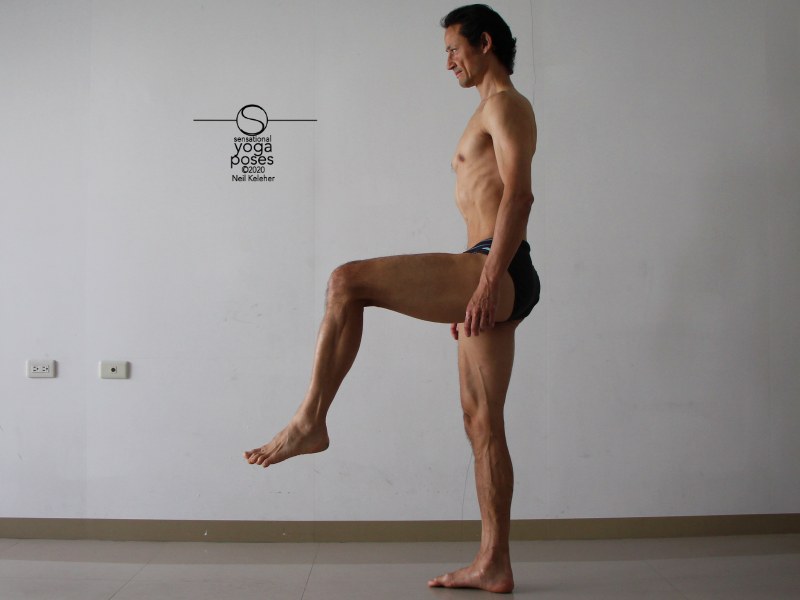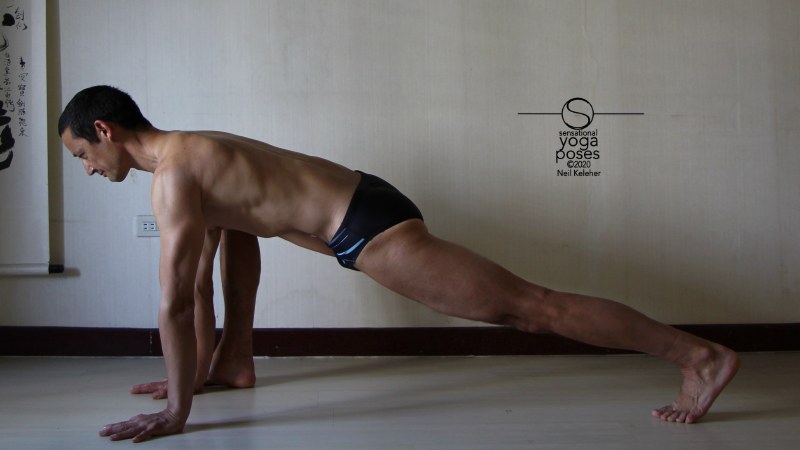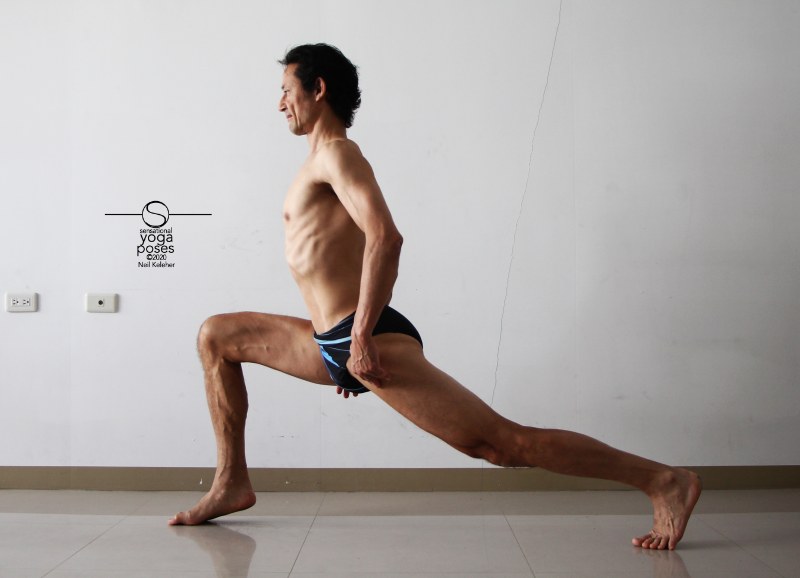Hip flexor stretching and strengthening
On page cat links

How do you stretch the hip flexors? How do you strengthen them? First of all it helps to understand which muscles flex the hip (and what other actions they also do).
On page cat links

How do you stretch the hip flexors? How do you strengthen them? First of all it helps to understand which muscles flex the hip (and what other actions they also do).
While the psoas and iliacus are thought of as the main hip flexors, when it comes to bigger, more strenuous movements, there are other muscles which are also important in flexing the hip. These muscles include:

The gracilis attaches near the pubic bone and runs down the inside of the leg to attach to the top of the inside of the tibia, just below the bump of the knee.
the sartorius attaches at the ASIC (the hip point), and runs down the inside of the leg to also attach to the inside of the tibia, in front of the gracilis.
Rectus femoris attaches below the ASIC and runs down the front of the leg to attach to the knee cap and front of the tibia.
Tensor fascia latae attaches to the ASIC and from there to the IT band (iliotibial tract) which runs down the side of the leg to attach to the outside of the top of the tibia, just in front of the fibula.
Note that the gracilis is perhaps more engaged in hip flexion when the leg is extended (reaching back).
Also note that the sartorius act as a hip flexor if the knee is straight, or if the vastus muscles are active so that the knee resists bending.
In this latter case the knee could be bent, but with the vastus muscles active, it resist's further bending. If not then the sartorius would act to bend the knee instead of flexing the hip. The assumption here is that the hamstrings would also active to provide the necessary force for the vastus muscles to work against.
Muscles in general need a fixed anchor point for effective activation or relaxation. You could think of this as giving a muscle stability.
Lacking a fixed end point a muscle may become tight as a result. As an example, standing on ice, you might tend to tense up to stabilize your body and to prevent slipping. On a grippy surface, you can relax because friction helps to stabilize your body. And so one reason you might have tight hip flexors is that they haven't got a stabilized end point.
Understanding this point, whether stretching the hip flexors or strengthening them, or simply using them, one of the first things you can do is to create a stable or fixed anchor point for effective hip flexor functioning.
The sartorius, and tensor fascia latae both attach to the ASICs. The rectus femoris attaches just below.
Since, when working to flex the hip, these muscles create a downwards pull on the ASIC, to anchor them it helps to create an upwards pull on the ASICs.
Another option is to create a downwards pull on the ischial tuberosity and/or PSIC. You can do that by activating the hamstrings.
If you create a downwards pull on the PSIC to help anchor the ASIC, that would mean that the hip flexors and hamstrings are working against each other.
Focusing on the ASIC, a simple way to anchor the ASIC is to first lift the front ribs. Then you can the use external obliques to create an upwards pull on the ASIC. Another option is to create an upwards pull on the pubic bone.

A simple way to strengthen the hip flexors is to lift a knee while standing on one leg. Stand with feet turned out a slight amount. Knees can be slightly bent or straight. Shift weight to one leg.
In this action, one of the key muscles helping to flex the hip is the rectus femoris.
How would you get the sartorius to also activate? Try straightening the knee a slight amount, enough that your vastus muscles activate.
The more you straighten the knee, without letting either it or the pubic bone/asic or sternum to drop, the more you work your hip flexors.
Note that the sartorius attaches to the inside of the tibia, just below the bump of the knee. The tensor fascia latae attaches to the outside of the tibia, just in front of the fibula.
When the knee is bent these muscles can potentially work against each other to stabilize the shin against rotation. So that they don't cause the knee to bend, the vastus muscles would have to activate to oppose the knee closing action of these muscles.
And so one way to further anchor your hip flexors in the standing knee lift is to stabilize the bottom of the knee (the top of the shin) against rotation.

An intermediate pose for stretching the hip flexors, and continuing to strengthen them is low lunge.
In this position you step one leg back with your elbows straight and hands on the floor. If you straighten the back knee, you can give the hip flexors of your back leg a fixed anchor point by reaching your chest forwards and then from there creating a forwards pull on your pubic bone. This may be enough to anchor the gracilis as well as the sartorius, rectus femoris and tensor fascia latae.
The amount of forward movement of your pubic bone will probably be slight. The more important point is that you create a forwards pull on it to resist the opposing pull of the hip flexors.

Going into an upright lunge, the same general steps can be used. First lift your chest. From there use your abs to create an upwards pull on your pubic bone. From there, to deepen the stretch work at sinking your hips.
An alternative is to turn the back foot out. This may make it easier to stretch the sartorius in particular.
You can read more about that in Sartorius stretch Warrior 1.

For a rather more intense hip flexor stretch, take a look at the couch stretch (and some similiar hip flexor stretches.) These stretches are quite intense and as a result it can be a lot easier to "mentally run away" while doing these stretches. For that reason, pay special attention to how to anchor the hip flexors and how to actively stretch them. All that and more in Couch stretch.
To learn how to activate your hip flexors at will, check out my Lessons in muscle control for your hip flexors course.
And to access all of my muscle control courses for one low monthly price (you can cancel at any time), check out my Take out the slack membership program.
